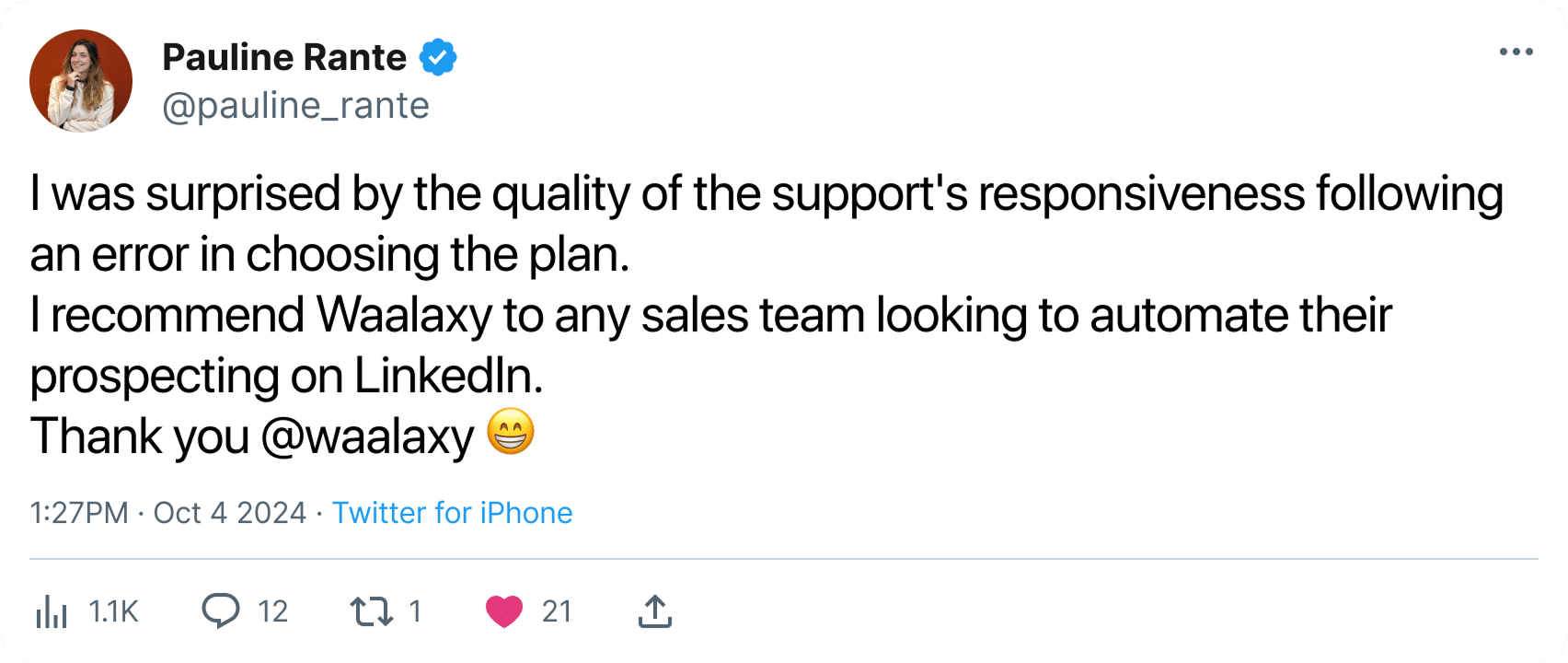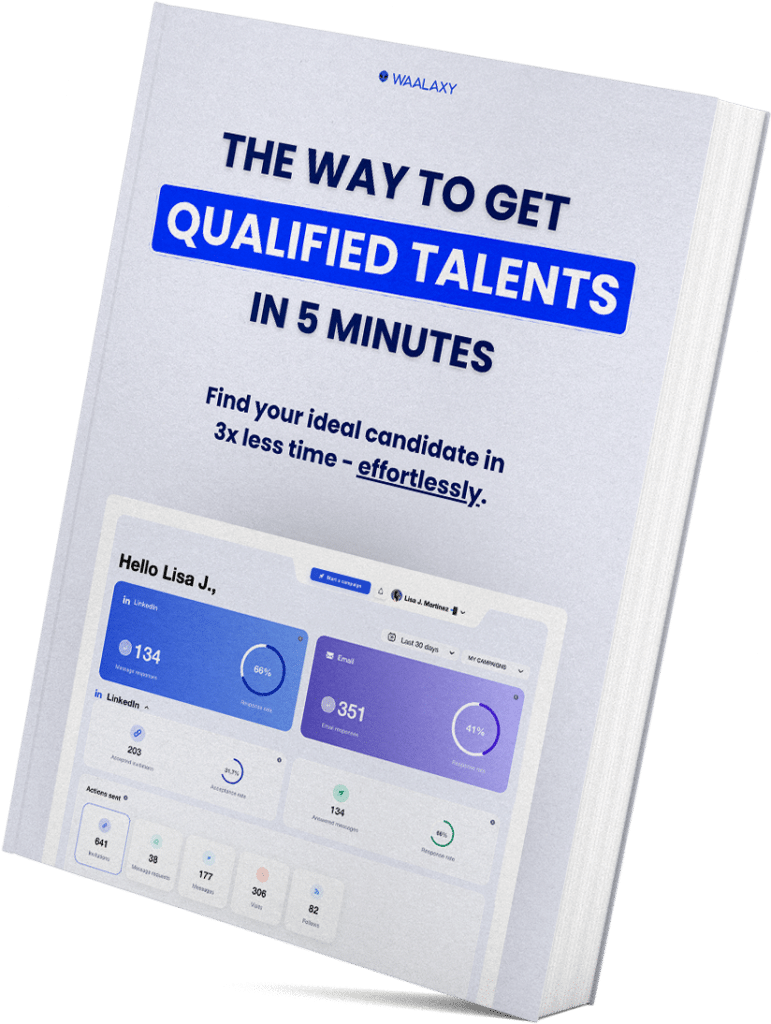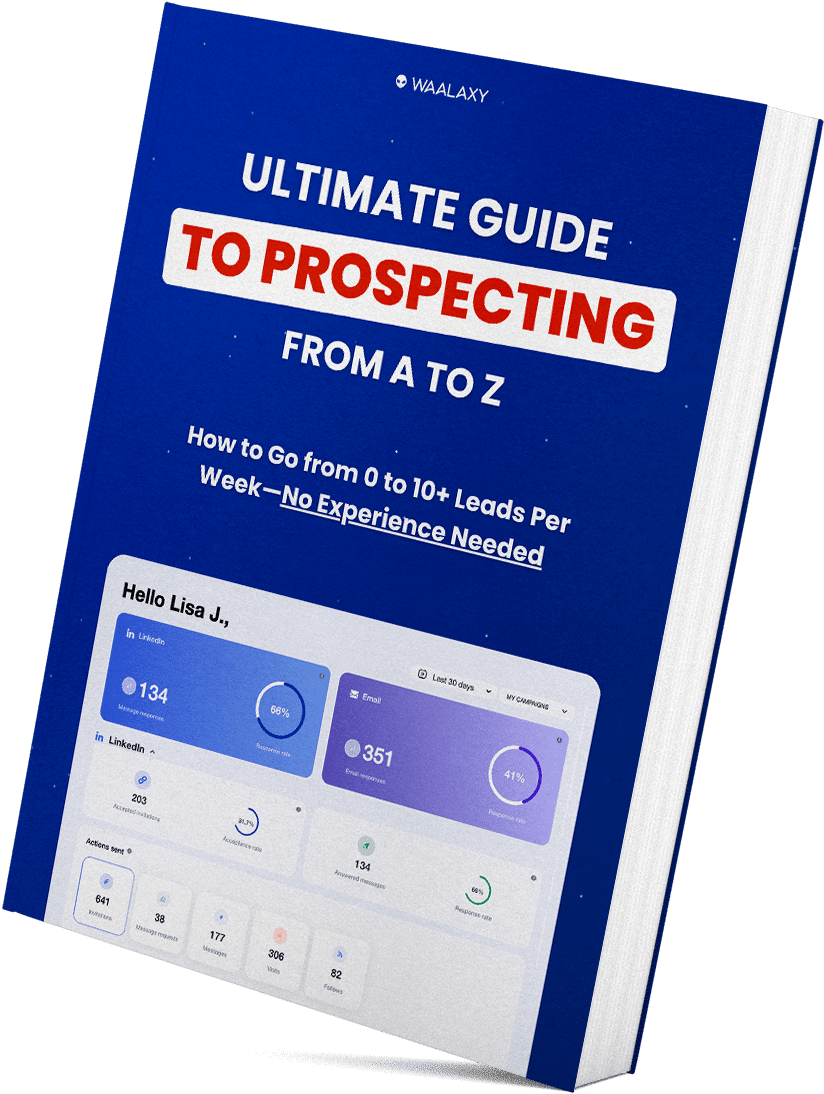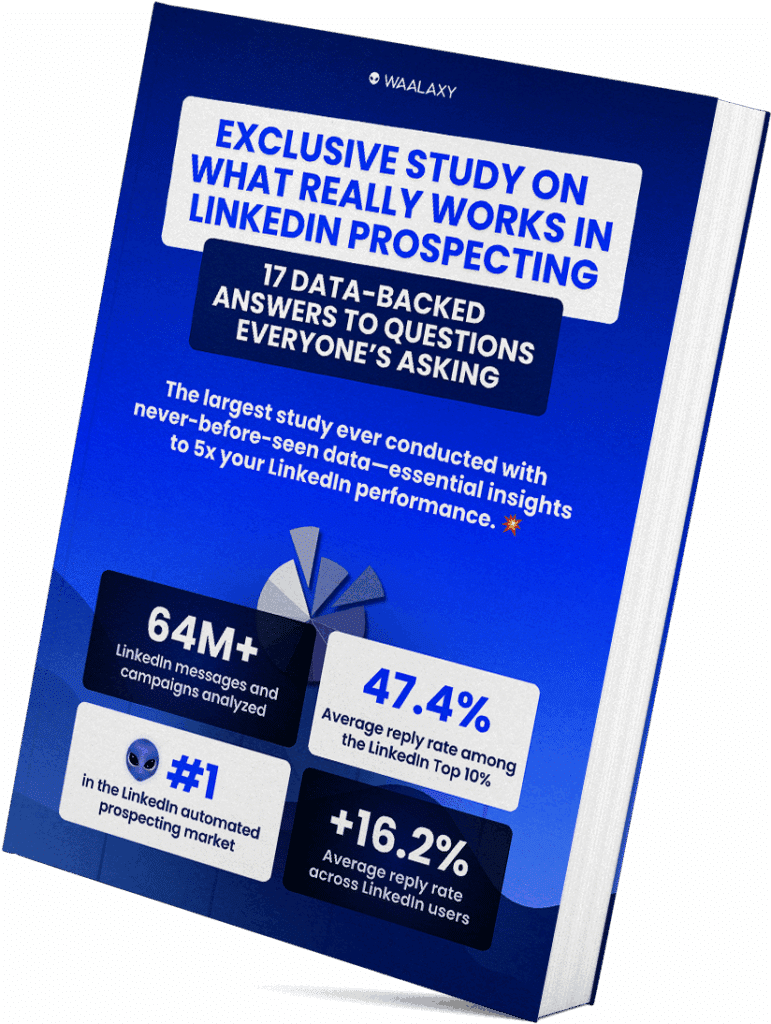Does becoming a LinkedIn Ghostwriter sound like a dream come true? Of course it does. Imagine a job where you write behind the scenes for influential entrepreneurs and often overworked executives, while working from anywhere.
Today, LinkedIn ghostwriters have become indispensable players in boosting the visibility and credibility of those who lack the time or inspiration to do it themselves.
Here, we’ll talk about skills to develop, how to find your first customers, and above all, the keys to making this more than just a job. 👀
Fasten your seatbelts, departure imminent! (Reading time: about 4 minutes)
What is a Ghostwriter on LinkedIn?
This job involves writing content on behalf of customers. This content can be :
- Inspiring posts to share a professional experience.
- Sharing expertise to consolidate the authority of a manager or entrepreneur.
- Success stories, case studies or engaging personal anecdotes.
The objective? Reinforce the customer’s personal brand, attract the attention of their target audience and generate engagement. 💪🏼
All the while taking care to respect their writing style. 🪶
Not everyone has the time, or the skills, to write engaging posts. That’s where the ghostwriter comes in. 👀
Okay, but what are the pros and cons? Well, here they are. ⬇️
| ✅ Benefits | ❌ Disadvantages |
|---|---|
| Flexibility: remote working, adjustable working hours. | Discretion: your name never appears on published content. |
| Growing demand: many professionals are looking to improve their LinkedIn presence. | Adaptability: adjusting to different styles and tones can be complex. |
| Creative freedom: tell compelling stories, create engaging content. | Results pressure: your customers expect a high level of commitment or immediate results. |
| Attractive revenues : premium services can be invoiced. | Prospecting cycle: finding regular customers can be a challenge at first. |
| Development of various skills: storytelling, copywriting, content strategy. | Sometimes solitary work: little direct interaction with readers or the community. |
The difference between ghostwriter, copywriter and copywriter
Although these three professions are linked to writing, they have very different objectives and approaches. To avoid any confusion, I’m here to shed some light on the subject. 🏮
1️⃣ The ghostwriter ⭢ the writer in the shadows.
Their main role is to write content on behalf of another person, whether LinkedIn posts, articles or even books.
Unlike a traditional copywriter, he or she adopts the tone, style and voice of the client, so that the content appears authentic and accurately reflects the client’s personality. 😇
Objective: create engaging content that reinforces your customer’s credibility or personal brand.
2️⃣ The copywriter ⭢ the master of persuasion.
He writes to inspire an audience to take action, whether to click, buy, or sign up.
His work often focuses on marketing materials such as :
- Advertising.
- Sales pages.
- Emails.
- Conversion-oriented social publications.
Objective: increase sales or generate leads for a company.
3️⃣ The copywriter ⭢ the information content expert.
It focuses on delivering clear, reliable and useful information to meet the needs of its audience with :
- Blog posts.
- White papers.
- Practical guides.
Objective: to inform, educate or solve a specific problem.
How do I become a Ghostwriter?
Still up for being a ghostwriter? Perfect, here are 4 steps to becoming one! ⬇️
1) Develop your know-how
The first step is to improve your skills. You need to understand the codes and mechanics of LinkedIn to stand out from the crowd. 💬
To do this, start by studying LinkedIn’s algorithm:
- What types of posts generate the most engagement (personal stories, carousels, practical advice)?
- What’s the ideal publication frequency? (usually 2-3 times a week).
- What formats and structures attract attention (short sentences, emojis, CTAs)?
And that’s not all: storytelling!
The most successful publications often tell a story, such as :
- 🥇 A challenge achieved.
- 🥈 A lesson learned.
- 🥉 A powerful anecdote.
Finally, the best lesson is practice. Even without clients at first, practice writing mock posts or work on your own LinkedIn profile.
To do this, test different styles, tones and formats, and analyze the results to see what works and what doesn’t. 👀
2) Approach your ideal customers
Well, once you’re up and running on the know-how side, it’s time to find your first customers. 🤩
What could be better than prospecting (combined with the right tools), to find your customers. 👀
To do this, start by identifying your target audience, i.e. “who are your ideal customers?”. This could be entrepreneurs, executives or freelancers who are active on LinkedIn.
Next, we recommend using an automated prospecting tool, to save you time and optimize your results. 💬
I’m thinking directly of Waalaxy, which I think you’ll like. 👽
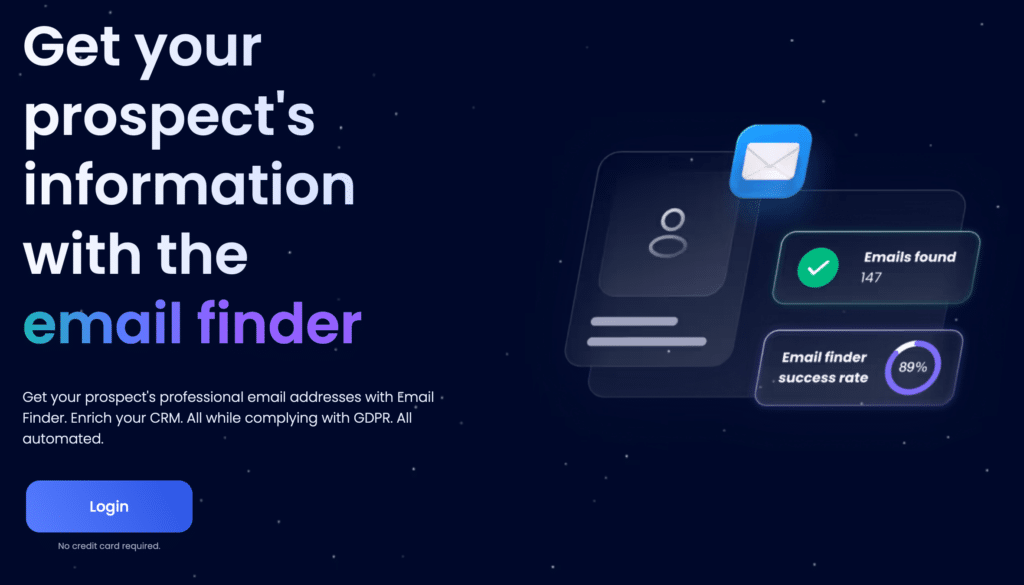
With it, you’ll be able to :
- 🟣 Automatically send personalized connection requests to targeted prospects.
- 🔵 Program message sequences to track your prospects effortlessly.
- 🟣 Combine LinkedIn and Emailing to maximize your response rates.
- 🔵 Recover your prospects’ professional email addresses to contact them outside LinkedIn.
- 🟣 Precisely target your prospects according to their sector, position, location.
- 🔵 Create automated workflows.
- 🟣 Analyze your campaign statistics.
Finally, we recommend that you refine your message as much as possible. Here’s an example: ⬇️
“Want to shine on LinkedIn without spending hours writing?
I’ll take up the pen for you. As a LinkedIn Ghostwriter, I help entrepreneurs publish impactful posts, captivate their audience and boost their visibility.
You’ve got potential, I’ll put it into words. Ready to get your personal branding off the ground? Send me a private message.”
3) Write attractive content
Being a ghostwriter on LinkedIn also means knowing how to write content that grabs attention from the first line and engages right through to the last word. 💬
To do this, start by refining the structure of your publication, which should be in 3 stages:
- 1️⃣ A hook ⭢ a catchphrase that directly appeals (shock statistic, intriguing question, anecdote).
- 2️⃣ A clear text ⭢ 2 or 3 paragraphs where you tell a story or share an idea.
- 3️⃣ A call to action ⭢ ask a question, or invite interacting (comment, share).
On LinkedIn, it’s not corporate content that works, but content that reaches the audience.
Talk about failures, successes or moments that are unique to you and that you’d like to share with your customer.
Finally, if you’re short of time or inspiration, you can use a tool like Kawaak.
It helps you come up with ideas, choose the right formats and even schedule your posts in advance. 😇
For example, you can test different catchphrases in just a few seconds! ⏱️
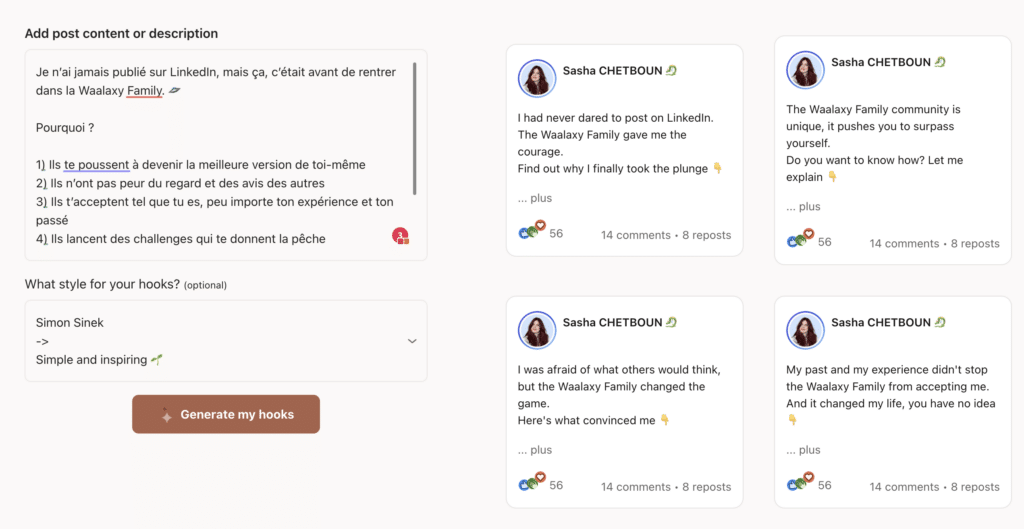
4) Maintaining relationships
Finally, once you’ve signed with a client (which I hope you do), your goal isn’t just to write content, you need to build a long-term relationship (a bit like a couple after all 😅).
Loyal customers can become your best sources of revenue, but also your ambassadors to new prospects.
So don’t hesitate to keep in touch with them to :
- 🥇 Discuss goals (current or new if they have any).
- 🥈 Evaluate post results.
- 🥉 Adjust strategy if necessary.
Then analyze their post stats (views, likes, shares, comments) and show them the fruits of your efforts. 😇
This reinforces their confidence in your skills.
What I love is anticipating their needs, by proposing content ideas, for example:
“I’ve noticed that carousels generate a lot of engagement in your sector. It’s an ideal format for captivating your audience and structuring your ideas in a powerful way. Why not try one out for your next post? Let’s have a chat!“
Bim, your customer feels listened to and privileged. 😇
Finally, if you feel you have the shoulders for it and the relationship is well established, you can offer other services such as: ⬇️
- Complete LinkedIn account management.
- Content strategy.
- Writing longer content such as blog posts.
Where can I find the first missions?
Getting started as a LinkedIn ghostwriter is great. Finding your first customers is even better.
But, let’s be honest, landing your first assignments can be a real headache (worse than a game of chess), when you don’t yet have a solid network or portfolio.
But don’t worry, there are several effective strategies for achieving this, even without experience! 👇🏼
1) Refine your LinkedIn profile
The first thing to do if you’re looking for clients on LinkedIn is to make your profile impeccable. 👌
Why?
Because your profile is like your shop window: it has to be neat and clean. Before a prospect even responds to you, they’ll see who you are.
And if he comes across an empty or poorly optimized profile, he’ll move on.
The objective is simple: when a manager visits your profile, he or she must understand that he or she needs your services.
Here are a few golden rules to follow 🥇 :
- Clear, catchy title (e.g.: I help entrepreneurs become influential through engaging posts”)
- Profile photo and banner (good lighting, neutral background, impactful phrase, visual that evokes the editorial team).
- Info” section (explain what you do, how you can help).
- Call to action (e.g.: you don’t have enough time to publish? Contact me and gain visibility).
Finally, don’t overlook referrals. You can, for example, offer reduced-rate assignments in exchange for a review. ⭐️

Once your first reviews are posted, your credibility will soar. 🏹
2) Activate your network
You may not have thought about it but, many freelancers underestimate the power of word-of-mouth, when your first contracts may come from former colleagues, entrepreneurial friends or simply your LinkedIn connections. 👀
But to do that, people need to know what you do. 🤔
For example, you can make an announcement post, like :
“I’m launching myself as a LinkedIn Ghostwriter! I help entrepreneurs publish engaging posts and gain visibility. If you’d like to know more, send me a message.”
This not only attracts prospects, but also encourages your network to recommend you.
Then, don’t hesitate to interact with your existing contacts. To do so, comment, like and share their publication.
It’s a bit like successful marketing campaigns: the more you’re present, the more you stay in their minds. 🧠
3) Use dedicated platforms
If, despite your best efforts, your network isn’t enough, there are freelance platforms available. They enable you to showcase your services, be visible to your active customers and perhaps even land your first contracts. 👀
There are plenty of them, such as Malt, Upwork, Fiverr and ComeUp, bringing together thousands of entrepreneurs and companies looking for copywriters and ghostwriters.
Once you have registered, we advise you to optimize your profile as much as possible:
- Use a clear, punchy description.
- Add examples of LinkedIn posts.
- Display your prices.
Competition on these sites is fierce. So remember to respond quickly to offers and send personalized proposals. 🚀
How about a recap?
Now you know exactly how to become a ghostwriter on LinkedIn. But between you and me, reading this article won’t be enough. The difference is what you do with it.
Will you optimize your profile today? Send your first messages with Waalaxy? Publish your first post to show what you’re worth? Because that’s where EVERYTHING counts.
The opportunities are there, the demand is exploding, and yet there are still too few good ghostwriters on LinkedIn.
So, are you just going to close this article, or are you going to take action? 👀
How much does a Ghostwriter cost?
A ghostwriter’s rates vary according to experience, content complexity and frequency of publication. Here’s an average: ⬇️
- Beginner: €50 to €100 per LinkedIn post
- Intermediate: €150 to €300 per post
- Expert: €400 or more per post
What is a Ghostwriter?
A ghostwriter may also be called a “ghostwriter”, but it means the same thing. It’s a person who writes content (articles, LinkedIn posts, books, speeches) on behalf of a client, without being credited. 👀
His role is to capture his client’s tone, style and ideas to produce authentic content, as if he had written it himself. 🪶
Where can I find Ghostwriters?
You can find ghostwriters on several channels, such as: ⬇️
- 🔵 Freelance platforms: Malt, Upwork, Fiverr, ComeUp.
- 🟣 LinkedIn: search for “Ghostwriter LinkedIn”.
- 🔵 Groups and forums: Facebook (freelance groups), Slack or Discord dedicated to copywriting.
- 🟣 Content agencies: some offer turnkey Ghostwriter services.
- 🔵 Word of mouth: ask your network for recommendations.
You know all about the LinkedIn ghostwriter profession. 👋🏽


